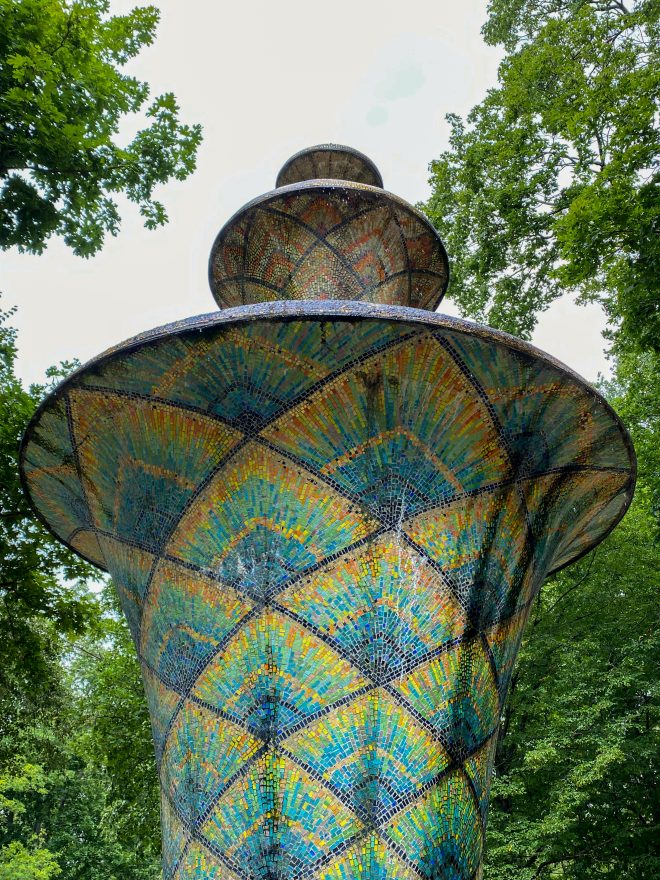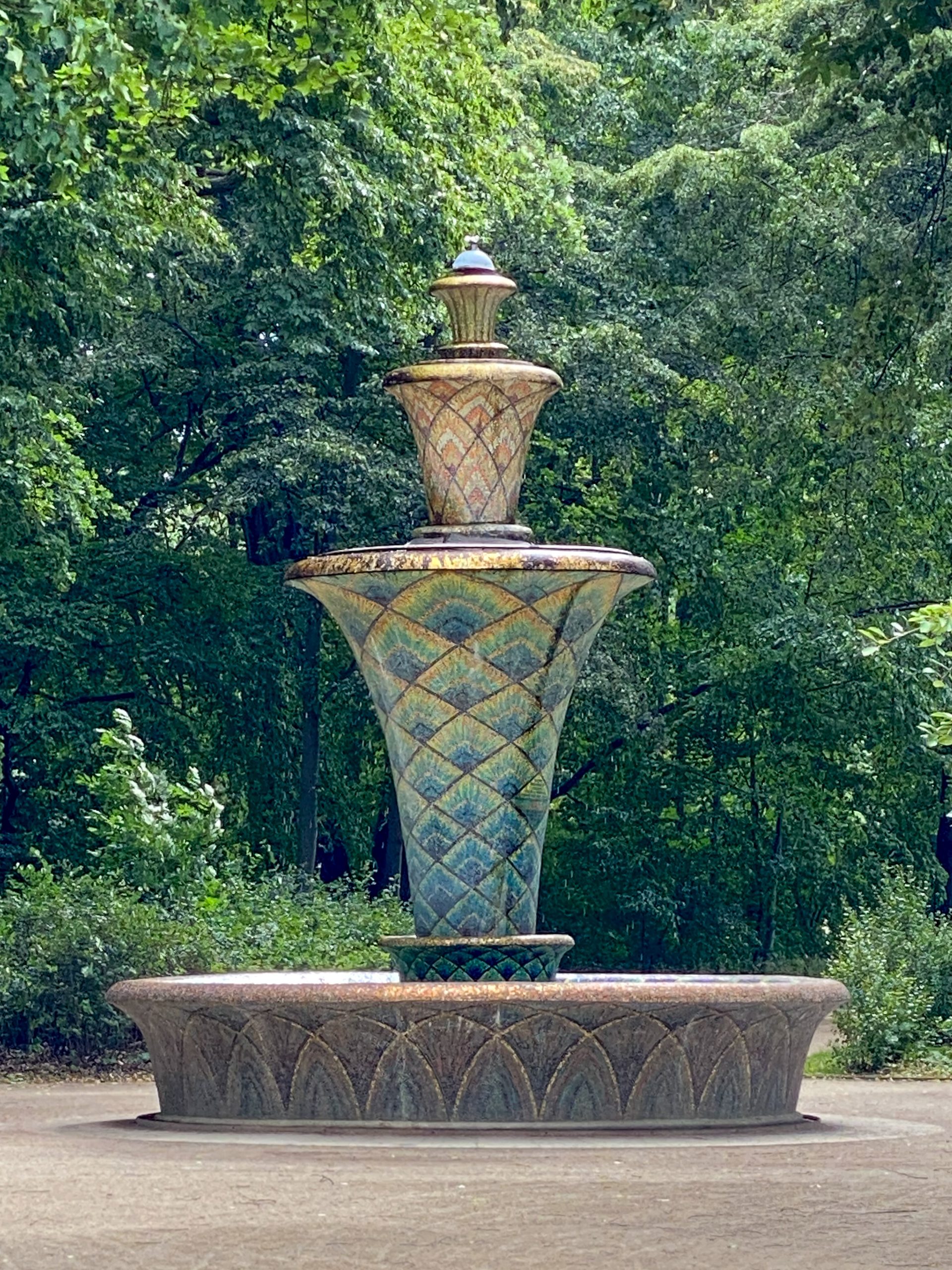
Mosaic Fountain, 1926. Design: Marlene Moeschke-Poelzig, Hans Poelzig. Photo: Daniela Christmann
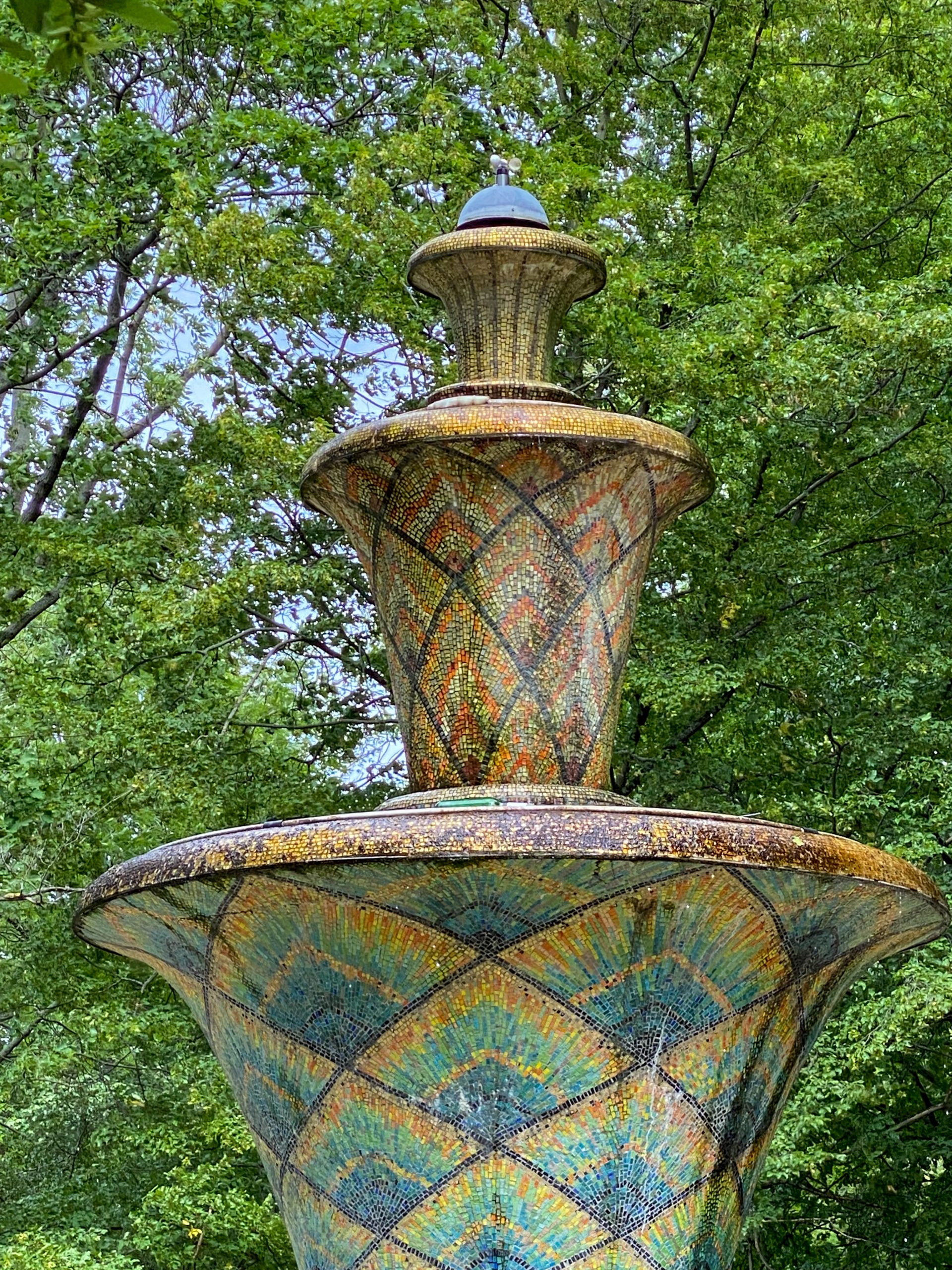
Mosaic Fountain, 1926. Design: Marlene Moeschke-Poelzig, Hans Poelzig. Photo: Daniela Christmann
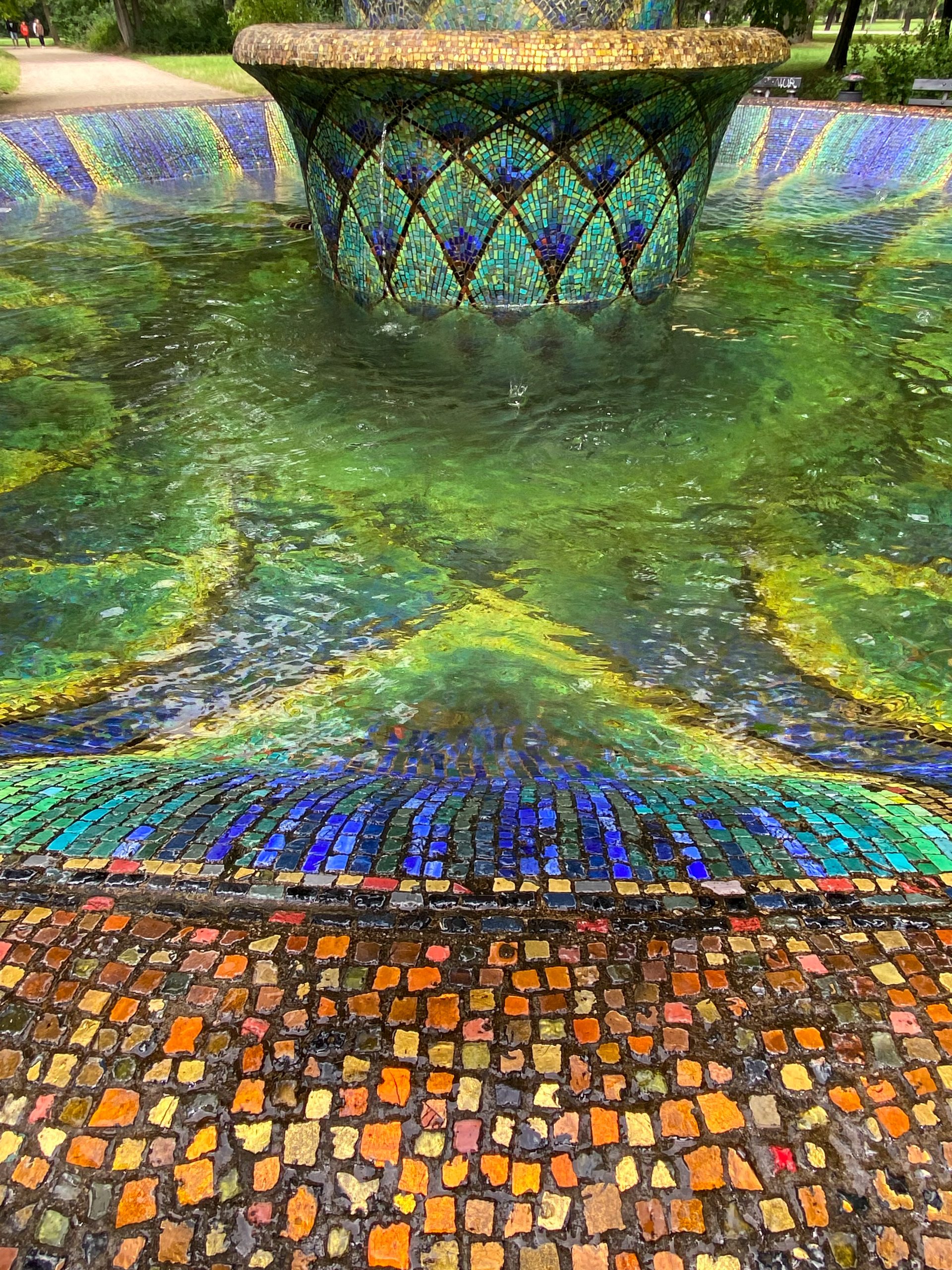
Mosaic Fountain, 1926. Design: Marlene Moeschke-Poelzig, Hans Poelzig. Photo: Daniela Christmann
1926
Design: Marlene Poeschke-Poelzig, Hans Poelzig
Großer Garten, Dresden, Germany
The Mosaikbrunnen (Mosaic Fountain) in the Großer Garten in the Old Town of Dresden was built in 1926 according to designs by Marlene Moeschke-Poelzig and Hans Poelzig in the Art Deco style.
Marlene Moeschke-Poelzig
Marlene Moeschke had studied sculpture at the Kunstgewerbeschule Hamburg. After working at the Kunstgewerbeschule in Munich, she received a studio scholarship from the Prussian Academy of Arts in Berlin.
At an event of the Berlin Secession in the spring of 1918, she met architect Hans Poelzig, with whom she had a close, artistically fruitful partnership until his death in 1936.
In 1924 Marlene Moeschke became Hans Poelzig’s second wife.
From 1918 onwards, Marlene Moeschke worked not only on sculptural but also on decorative art projects, gravestones and furniture designs.
In 1919 she was significantly involved in the conversion of a former Berlin market hall into the Großes Schauspielhaus for Max Reinhardt.
Between 1920 and 1921 she founded the Bauatelier Poelzig together with Hans Poelzig.
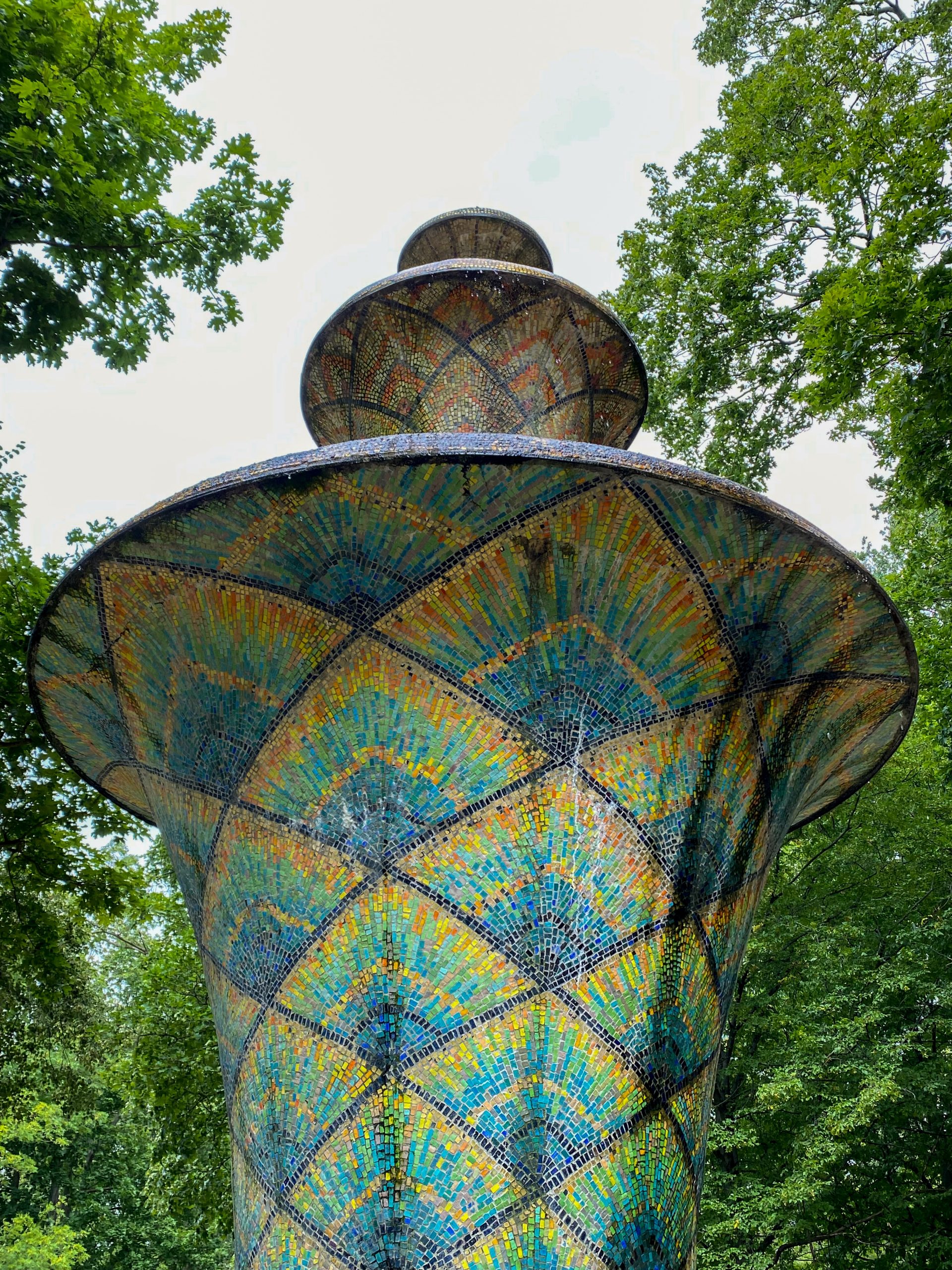
Mosaic Fountain, 1926. Design: Marlene Moeschke-Poelzig, Hans Poelzig. Photo: Daniela Christmann
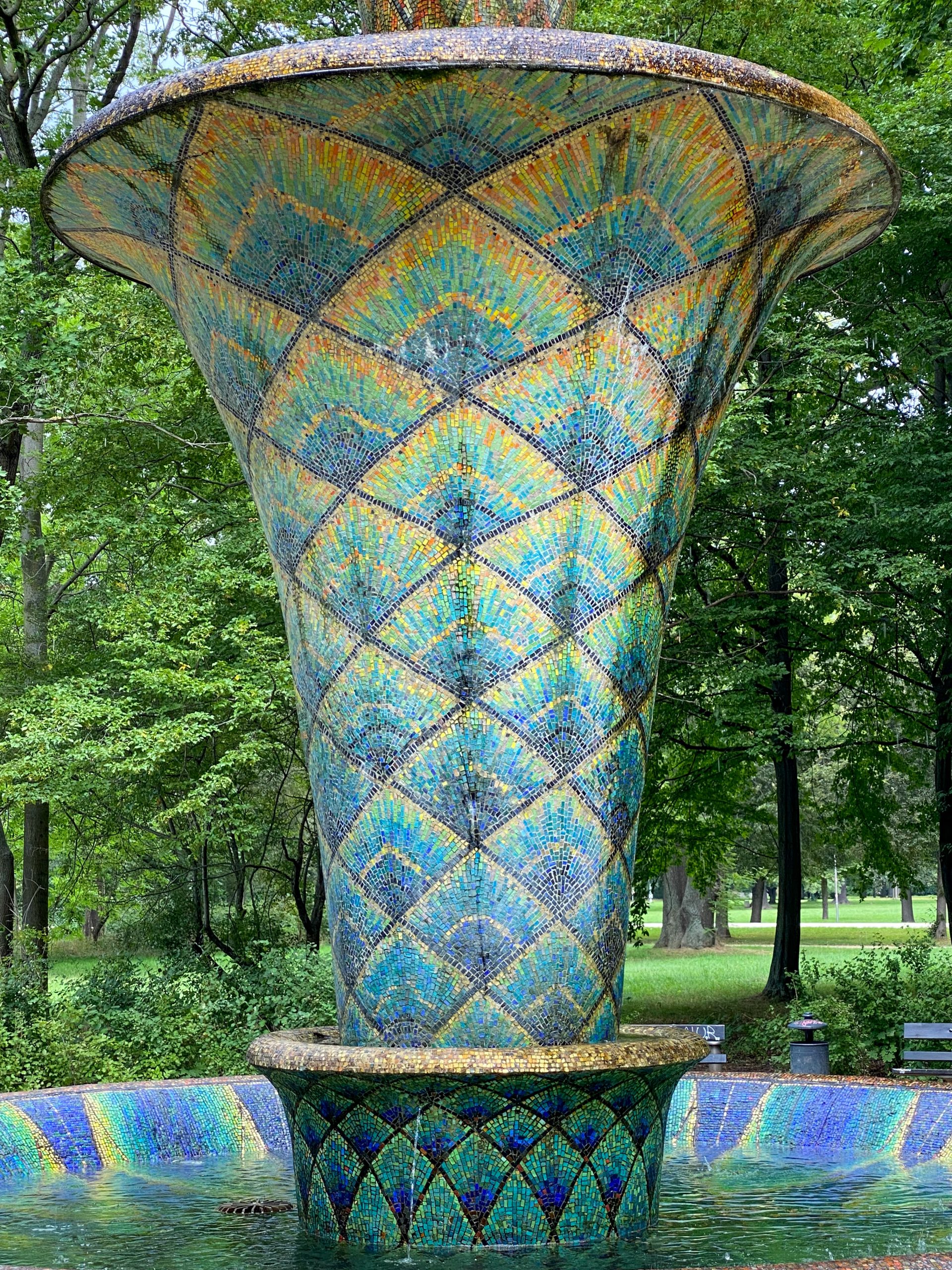
Mosaic Fountain, 1926. Design: Marlene Moeschke-Poelzig, Hans Poelzig. Photo: Daniela Christmann
Jubilee Horticultural Exhibition Dresden 1926
In 1926, the Jubilee Horticultural Exhibition was held in Dresden to celebrate the centenary of the Saxon Society for Botany and Horticulture.
Among the many works of art created for the occasion was the mosaic fountain designed by Hans Poelzig and his wife Marlene Moeschke-Poelzig, which stood in the so-called Eichenhof.
Gustav Allinger, a garden architect in Berlin, had won the competition for the design of the horticultural exhibition, which had been announced two years earlier, and was responsible for its implementation.
Included in the 32-hectare exhibition area were the Botanical Garden Dresden and almost a third of the Great Garden. The first plantings began in 1924.
The show was divided into six sections: In addition to the permanent exhibition of products of plant, flower, fruit and vegetable cultivation, visitors were presented with special gardens, sample allotment gardens and a model burial ground.
Originally, the mosaic fountain was to be dismantled after the exhibition. Today, the fountain is still in its original location near the main avenue in the southwestern part of the Great Garden on a crossroads.
Mosaic Fountain
The shape of the fountain is modeled after a plant: Three stylized vegetal shapes grow out of a round fountain bowl.
The fountain consisted of hollow concrete bodies, which were set with about half a million mosaic tiles in the colors earth brown, gray, green, blue, orange, yellow and gold.
It was manufactured by the Berlin company Vereinigte Werkstätten für Mosaik und Glasmalerei Puhl & Wagner, which was the most important manufacturer of glass mosaics and stained glass in the German Reich at the time.
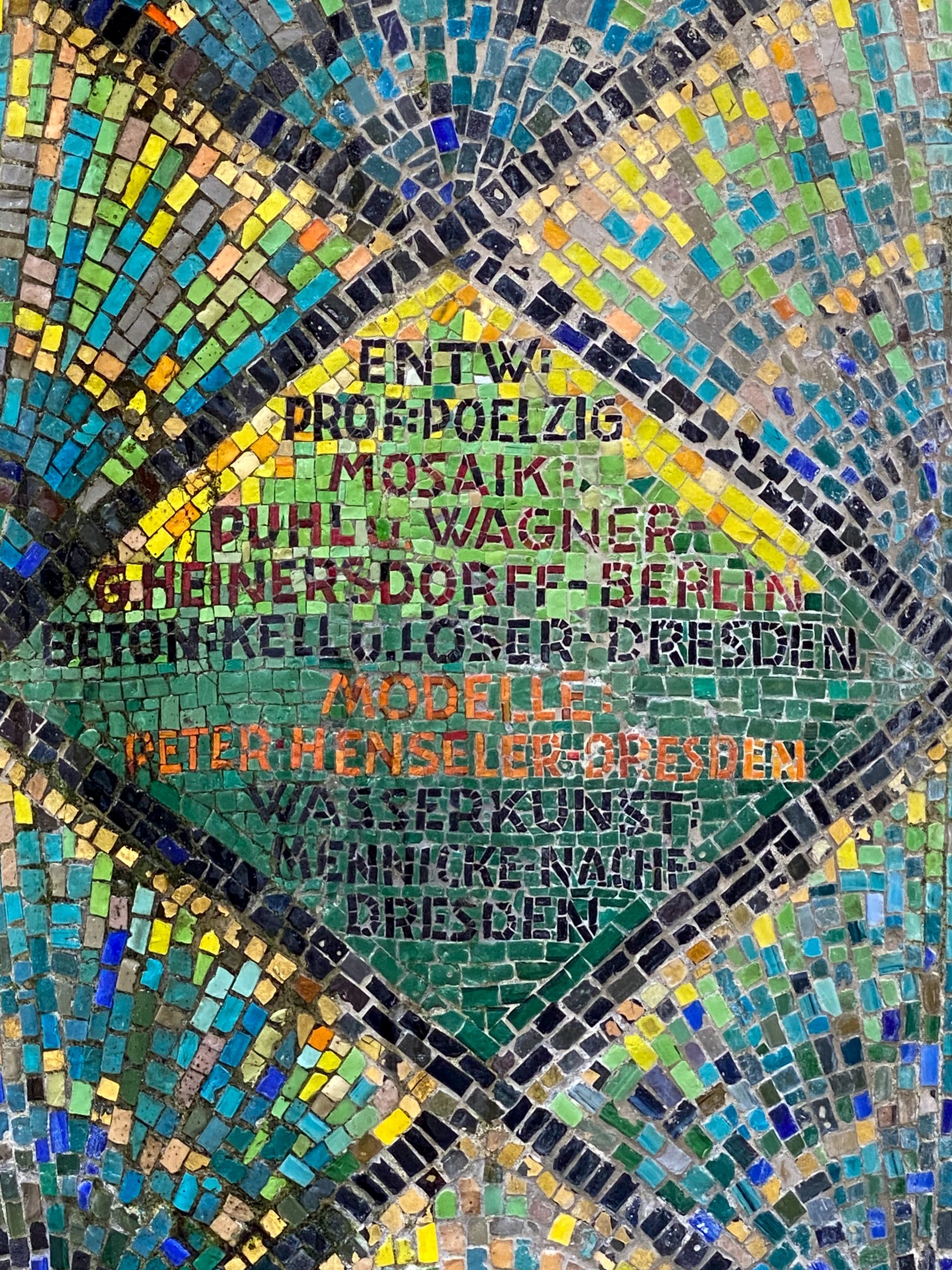
Mosaic Fountain, 1926. Design: Marlene Moeschke-Poelzig, Hans Poelzig. Photo: Daniela Christmann
The Fountain following the closure of the Horticultural Exhibition
After the end of the exhibition, when the fountain was to be torn down, Poelzig turned to the mayor Bernhard Blüher on September 17, 1926, asking for a permanent takeover of the fountain by the city of Dresden or the state of Saxony.
By then, according to his own account, Poelzig had incurred 30,000 marks in prime costs for the fountain and had supplied the designs free of charge.
Previously, August Wagner had also asked various Dresden authorities to take over the fountain. Mayor Blüher replied that he would like to preserve the fountain as an ornament of the Great Garden.
In doing so, he hoped that the state would assume the costs. On June 10, 1929, the firm Puhl & Wagner turned to the Great Council of the Dresden Art Academy.
Until then, contact with the responsible authorities had remained fruitless. A demolition of the fountain had already been ordered, a relocation to a site outside Dresden had failed due to lack of finances. An answer to this request has not been handed down – but the fountain was allowed to remain in its place.
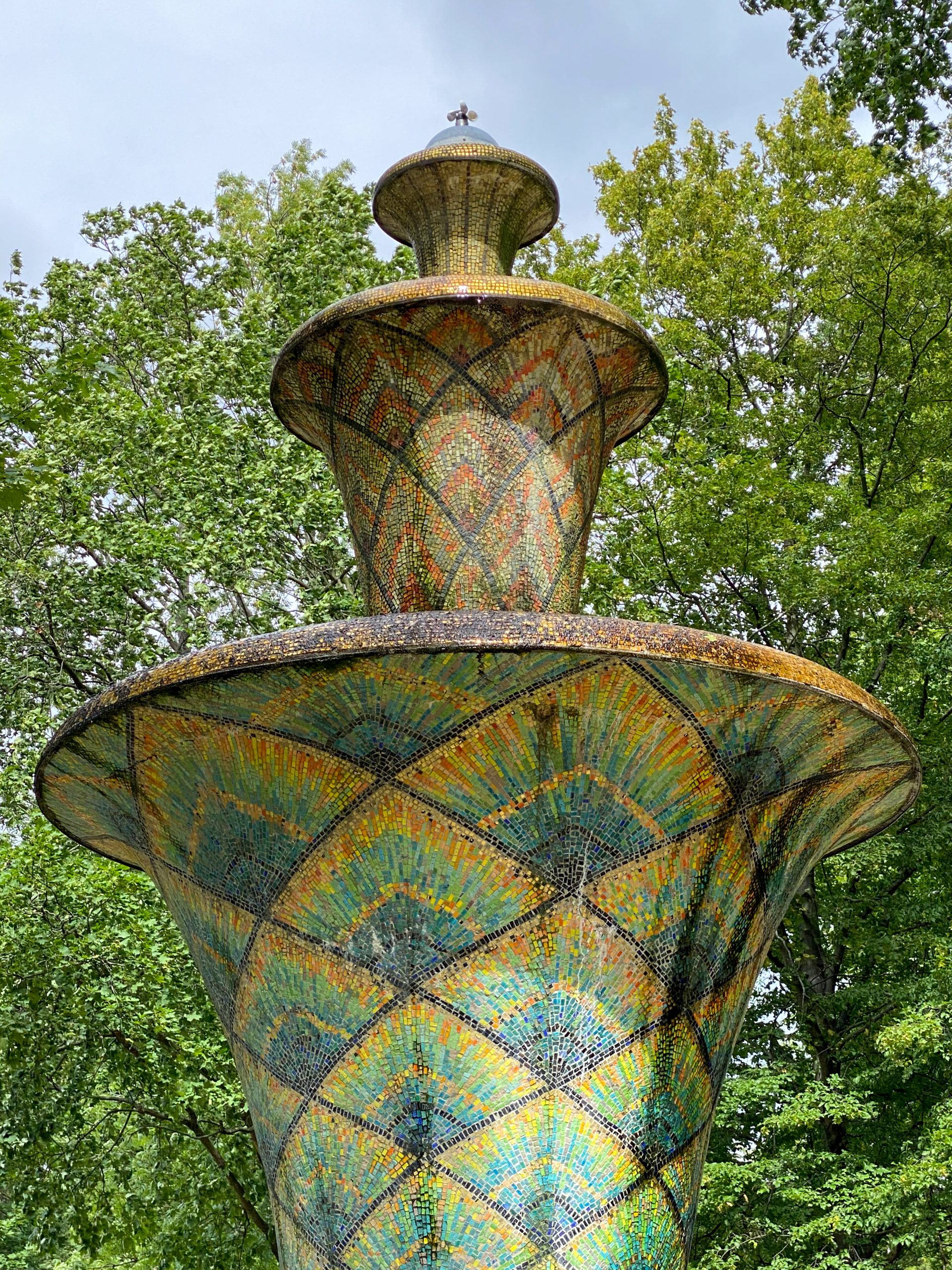
Mosaic Fountain, 1926. Design: Marlene Moeschke-Poelzig, Hans Poelzig. Photo: Daniela Christmann
Restoration and Renovation
The first restoration work took place in 1946 to eliminate holes caused by bomb fragments.
Since about 1980, the fountain stood dry because of its poor condition.
In 1994, a comprehensive restoration was carried out after the fountain had already shown great damage since the 1980s.
In 2006, the fountain had to be renovated again because individual mosaic stones were missing.
After the fountain shell had become leaky, the foundation and the fountain technology were renewed in 2013 and 2016.

